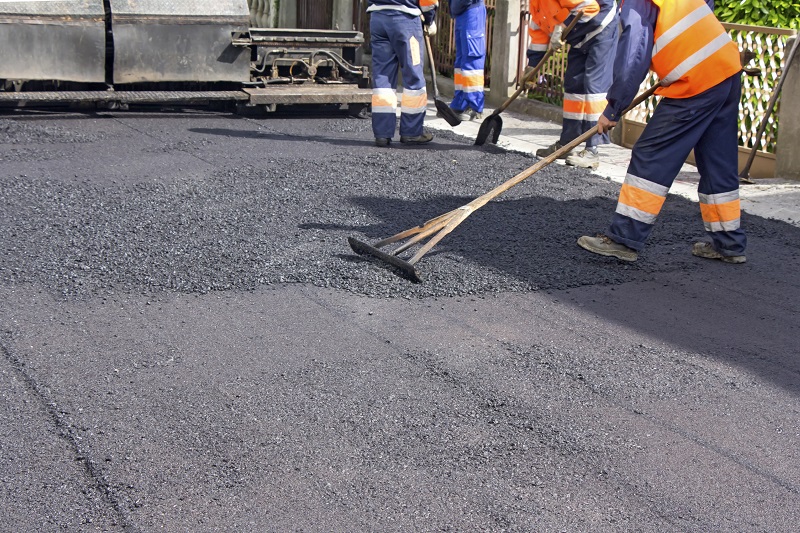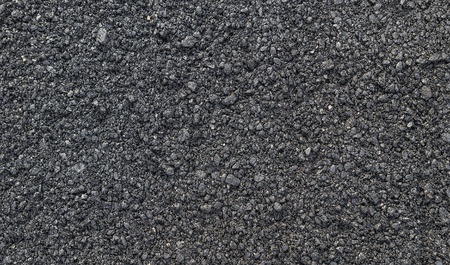Hot Mix Asphalt: The Structure for Safe and Secure Angled Parking Lots
Hot Mix Asphalt: The Structure for Safe and Secure Angled Parking Lots
Blog Article
Unlocking the Keys of Hot Mix Asphalt Technology
Discovering the midsts of hot mix asphalt modern technology discovers a globe where specific solutions and meticulous processes merge to form our roads and framework. The blend of fillers, binders, and accumulations isn't just a construction job but a calculated orchestration of resilience and efficiency. As we peer right into the intricate dance of parts, a tapestry of resilience and sustainability unfolds. What lies underneath this surface of asphaltic proficiency, and what tricks wait to be introduced in the world of paving technologies?
Importance of Warm Mix Asphalt
Hot Mix Asphalt plays a crucial function in modern-day facilities advancement because of its resilience and cost-effectiveness. As the most typically used leading material for roads, highways, and parking area, Warm Mix Asphalt provides a variety of advantages that add to its relevance in building projects. One vital advantage is its ability to withstand heavy website traffic loads and rough climate condition, providing a dependable and resilient surface area for transportation networks. Furthermore, Hot Mix Asphalt is cost-effective in both first building and long-lasting upkeep, making it a recommended option for several facilities jobs.
The longevity of Hot Mix Asphalt stems from its structure, which consists of aggregates, binder, and filler products that are meticulously chosen and mixed to fulfill specific performance requirements. Overall, the relevance of Hot Mix Asphalt in infrastructure growth can not be understated, as it proceeds to be a foundation of modern building and construction methods.
Parts of Asphalt Mixes
The make-up of asphalt blends includes thoroughly selected aggregates, binder, and filler products that are critical for achieving particular performance needs. Accumulations are the primary part of asphalt mixes, giving stamina and stability. These aggregates can be all-natural, such as gravel or smashed stone, or synthetic, like recycled materials from old sidewalks. The binder, typically asphalt or asphalt concrete, holds the aggregates together and supplies adaptability and durability to the mix. The choice of the binder is vital as it straight influences the mix's performance in different climate condition. Fillers, such as hydrated lime or Portland cement, are made use of to boost the mix's workability and aging resistance. Angled Parking.
The mix and percentage of these components play a substantial role in establishing the top quality and performance of the asphalt mix. Designers thoroughly design the mix to meet certain needs, thinking about aspects like web traffic volume, climate conditions, and pavement life-span. Correct option and balancing of accumulations, binder, and fillers are essential for creating long lasting, durable asphalt pavements.
Combining and Production Methods

When the accumulations are chosen, the binder, typically asphalt concrete, is included in bind the products together. The binder's high quality and quantity considerably affect the mix's toughness, resistance, and versatility to environmental variables. Additionally, fillers like moisturized lime or Rose city cement may be integrated to enhance certain features of the asphalt mix, such as its workability or wetness resistance.
During production, the aggregates and binder are heated up, generally in between 250-325 ° F(121-163 ° C ), to facilitate blending and make certain correct layer of the aggregates. The blending process has to be complete to achieve a homogeneous mixture that promotes the desired performance attributes of the asphalt. Different methods, such as set blending or drum blending, are utilized to attain consistent and premium asphalt blends for building jobs.
Factors Influencing Asphalt Performance
Elements affecting asphalt efficiency include a series of variables that impact the toughness, durability, and total high quality of asphalt sidewalks. One key Discover More Here variable is the quality of products used in the asphalt mix. The type and source of accumulations, the binder top quality, and the additives all play a considerable duty in establishing the performance of the asphalt sidewalk. The gradation of aggregates is crucial as it affects the mix's workability, stability, and resistance to rutting and cracking.

Layout factors to consider, such as sidewalk density and drain, are necessary in ensuring the long-lasting efficiency of the asphalt pavement. By meticulously taking into consideration these designers, contractors and variables can optimize asphalt performance and enhance the solution life of sidewalks.
Lasting Practices in Asphalt Modern Technology

Additionally, the advancement of warm-mix asphalt (WMA) technologies has gained traction in the last few years. WMA permits the production and positioning of asphalt blends at lower temperatures contrasted to traditional hot-mix asphalt, leading to reduced power intake and greenhouse gas emissions. The use of permeable asphalt mixes can have a peek at this site aid reduce stormwater runoff problems by enabling water to penetrate through the sidewalk and right into the ground, advertising natural water filtering and reenergize procedures. By carrying out these lasting methods, the asphalt industry can contribute to building a much more eco-friendly and resilient infrastructure network.
Conclusion
In final thought, hot mix asphalt innovation plays an essential function in modern-day infrastructure growth because of its toughness and cost-effectiveness. By carefully stabilizing parts, using proper blending strategies, and taking into consideration numerous aspects, designers can produce premium asphalt blends that endure rush hour tons and rough weather. Embracing lasting methods, such as using recycled products and warm-mix technologies, better boosts the click to read more environmental friendliness of asphalt innovation.
Blending and production methods in hot mix asphalt technology include the accurate mix and handling of aggregates, binder, and fillers to develop a resilient and high-performance asphalt mix.Elements influencing asphalt efficiency incorporate a range of variables that influence the toughness, long life, and overall high quality of asphalt sidewalks. Lasting methods in asphalt modern technology include numerous efforts aimed at decreasing the ecological influence of asphalt manufacturing and paving procedures. By integrating reclaimed asphalt pavement (RAP) and recycled asphalt roof shingles (RAS) right into brand-new asphalt blends, the industry can dramatically lower the intake of raw products and energy, while additionally reducing land fill waste.
WMA enables for the production and positioning of asphalt blends at lower temperature levels contrasted to conventional hot-mix asphalt, resulting in lowered energy usage and greenhouse gas discharges.
Report this page